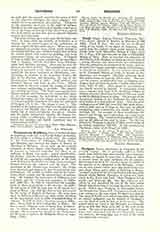

Truchsess von Waldburg, OTTO, Cardinal–Bishop of Augsburg (1543-73), b. at Castle Scheer in Swabia, February 26, 1514; d. at Rome. April 2, 1573. He studied at the Universities of Tubingen, Padua, Pavia, and Bologna, and received his degree of Doctor of Theology at Bologna. At an early age he received canonries at Trent, Spires, and Augsburg. In 1541 he became an imperial councillor and when on an embassy to Rome was made a papal chamberlain. On May 10, 1543, he was elected Bishop of Augsburg; in 1544 he was appointed cardinal-priest of the Title of St. Balbina by Paul III for settling a long-continued dispute between the emperor and the pope. The condition of his diocese was mournful: the clergy were ignorant and depraved, and Protestantism was widespread. He sought to mend matters by visitations, edicts, synods, and the improvement of instruction. He founded the University of Dillingen, now a lyceum, and the ecclesiastical seminary at Dillingen (1549-55). In 1564 he transferred the management of these institutions to the Jesuits. In 1549-50 and again in 1555 he took part in the papal elections at Rome. In 1552 his diocese was devastated by the troops of Maurice of Saxony. He went once more to Rome in 1559 and was there made the head of the Inquisition and, in 1562, Cardinal–Bishop of Albano. In 1567 he held a diocesan synod at Dillingen. From 1568 he lived altogether at Rome. He was a moral, religious man, of much force of character, to whom half measures and shiftiness were foreign. He incurred the hatred of the Protestants for his protest against the Religious Peace of Augsburg (1555).
KLEMENS LOFFLER

